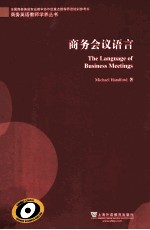图书介绍
商务会议语言 英文PDF|Epub|txt|kindle电子书版本网盘下载

- (英)汉德福德(HandfurdM.)著 著
- 出版社: 上海:上海外语教育出版社
- ISBN:9787544636872
- 出版时间:2014
- 标注页数:271页
- 文件大小:50MB
- 文件页数:301页
- 主题词:商务-英语-口语
PDF下载
下载说明
商务会议语言 英文PDF格式电子书版下载
下载的文件为RAR压缩包。需要使用解压软件进行解压得到PDF格式图书。建议使用BT下载工具Free Download Manager进行下载,简称FDM(免费,没有广告,支持多平台)。本站资源全部打包为BT种子。所以需要使用专业的BT下载软件进行下载。如BitComet qBittorrent uTorrent等BT下载工具。迅雷目前由于本站不是热门资源。不推荐使用!后期资源热门了。安装了迅雷也可以迅雷进行下载!
(文件页数 要大于 标注页数,上中下等多册电子书除外)
注意:本站所有压缩包均有解压码: 点击下载压缩包解压工具
图书目录
1 CANBEC:Corpus and context1
1.1 Data collection3
1.2 Corpus constituency7
1.3 Contextual information8
1.4 Transcription and anonymization15
1.5 Corpus size and generalizability18
1.6 Outline of the book19
References20
2 Background:Theory and methodology23
2.1 Theory25
2.2 Methodology37
2.3 Summary52
References53
3 The business-meeting genre:Stages and practices60
3.1 Applying Bhatia's multi-perspective model of discourse to business meetings62
3.2 The meeting matrix68
3.3 Applying the meeting matrix78
3.4 Summary88
References90
4 Significant meeting words:Keywords and concordances93
4.1 Institutional language and everyday English93
4.2 Lexico-grammatical theoretical considerations96
4.3 Word frequencies98
4.4 Keywords102
4.5 Summary113
References115
5 Discourse marking and interaction:Clusters and practices118
5.1 Defining clusters119
5.2 Clusters in business research122
5.3 Cluster lists125
5.4 Categorization of clusters131
5.5 Clusters in context137
5.6 Summary144
References146
6 Interpersonal language150
6.1 The transactional/relational linguistic distinction151
6.2 Pronouns155
6.3 Backchannels159
6.4 Vague language162
6.5 Hedges166
6.6 Deontic modality171
6.7 Summary178
References181
7 Interpersonal creativity:Problem,issue,if,and metaphors and idioms185
7.1 Problem and issue188
7.2 If195
7.3 Metaphors and idioms200
7.4 Summary213
References215
8 Turn-taking:Power and constraint218
8.1 Turn-taking in internal meetings222
8.2 Turn-taking in external meetings229
8.3 Summary241
References242
9 Teaching and learning implications245
9.1 Who is the learner?246
9.2 Teaching materials:What do they teach?250
9.3 How can a corpus such as CANBEC be exploited?253
9.4 Summary259
References261
Appendix265
Index266